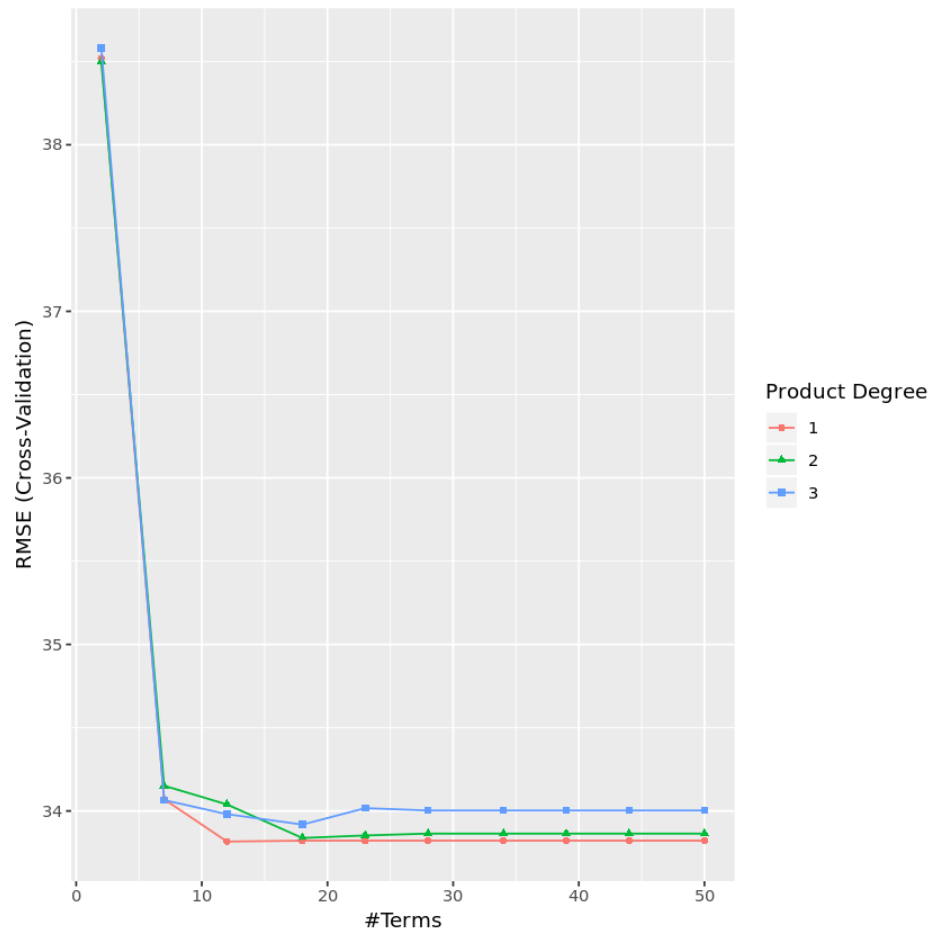Multivariate adaptive regression splines (MARS) can be used to model nonlinear relationships between a set of predictor variables and a response variable.
This method works as follows:
1. Divide a dataset into k pieces.
2. Fit a regression model to each piece.
3. Use k-fold cross-validation to choose a value for k.
This tutorial provides a step-by-step example of how to fit a MARS model to a dataset in R.
Step 1: Load Necessary Packages
For this example we’ll use the Wage dataset from the ISLR package, which contains the annual wages for 3,000 individuals along with a variety of predictor variables like age, education, race, and more.
Before we fit a MARS model to the data, we’ll load the necessary packages:
library(ISLR) #contains Wage dataset library(dplyr) #data wrangling library(ggplot2) #plotting library(earth) #fitting MARS models library(caret) #tuning model parameters
Step 2: View Data
Next, we’ll view the first six rows of the dataset we’re working with:
#view first six rows of data
head(Wage)
year age maritl race education region
231655 2006 18 1. Never Married 1. White 1. =Very Good 2. No 4.255273 70.47602
161300 1. Industrial 1. =Very Good 1. Yes 5.041393 154.68529
11443 2. Information 1. =Very Good 1. Yes 4.845098 127.11574
Step 3: Build & Optimize the MARS Model
Next, we’ll build the MARS model for this dataset and perform k-fold cross-validation to determine which model produces the lowest test RMSE (root mean squared error).
#create a tuning grid hyper_grid grid(degree = 1:3, nprune = seq(2, 50, length.out = 10) %>% floor()) #make this example reproducible set.seed(1) #fit MARS model using k-fold cross-validation cv_mars earth", metric = "RMSE", trControl = trainControl(method = "cv", number = 10), tuneGrid = hyper_grid) #display model with lowest test RMSE cv_mars$results %>% filter(nprune==cv_mars$bestTune$nprune, degree =cv_mars$bestTune$degree) degree nprune RMSE Rsquared MAE RMSESD RsquaredSD MAESD 1 12 33.8164 0.3431804 22.97108 2.240394 0.03064269 1.4554
From the output we can see that the model that produced the lowest test MSE was one with only first-order effects (i.e. no interaction terms) and 12 terms. This model produced a root mean squared error (RMSE) of 33.8164.
Note: We used method=”earth” to specify a MARS model. You can find the documentation for this method here.
We can also create a plot to visualize the test RMSE based on the degree and the number of terms:
#display test RMSE by terms and degree
ggplot(cv_mars)

In practice we would fit a MARS model along with several other types of models like:
- Multiple Linear Regression
- Polynomial Regression
- Ridge Regression
- Lasso Regression
- Principal Components Regression
- Partial Least Squares
We would then compare each model to determine which one lead to the lowest test error and choose that model as the optimal one to use.
The complete R code used in this example can be found here.